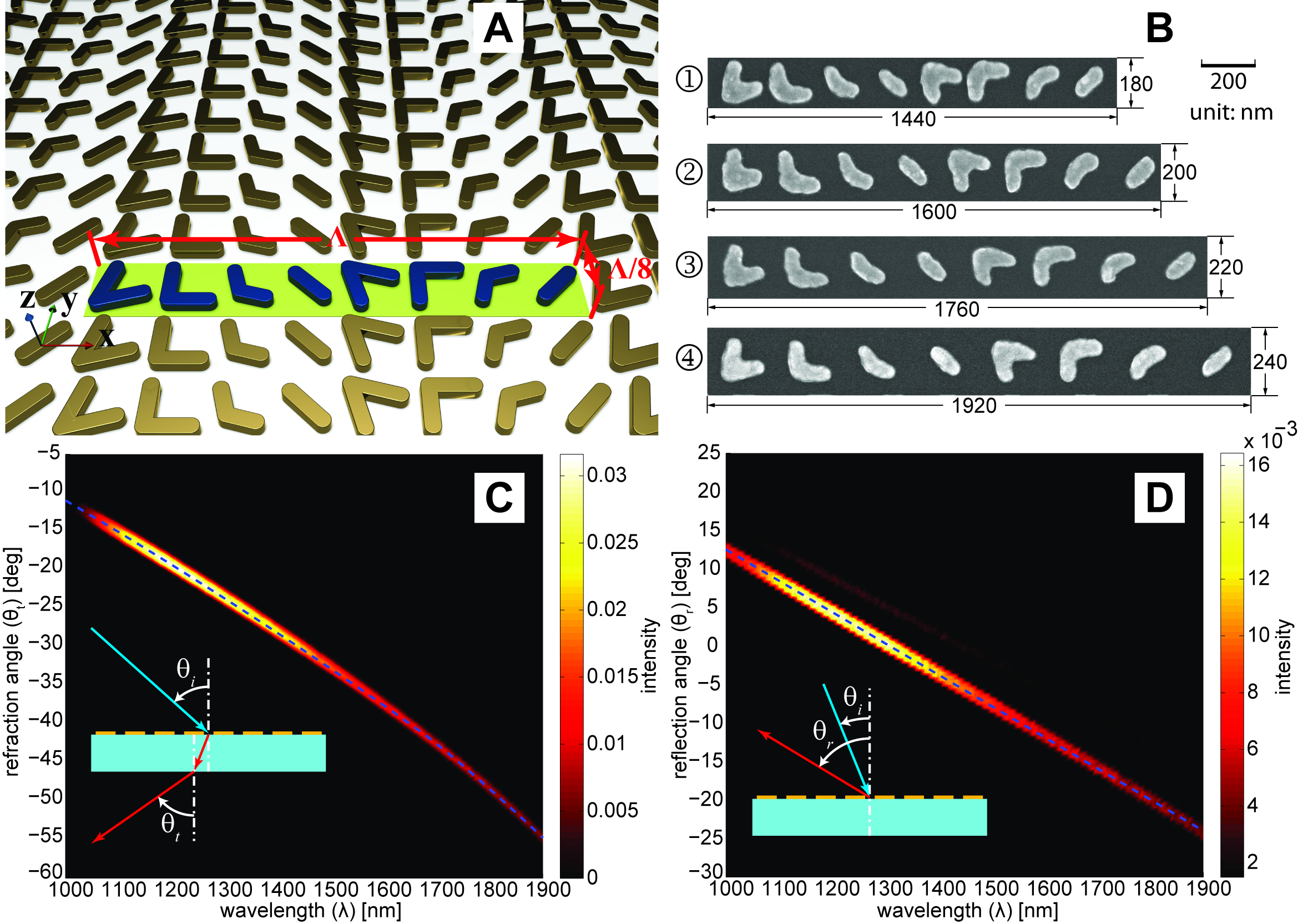Metasurface Bends Broadband Light into Arbitrary Directions
The precise manipulation of a propagating wave using phase control is a fundamental building block of optical systems. The wavefront of a light beam propagating across an interface can be modified arbitrarily by introducing abrupt phase changes. We experimentally demonstrated unparalleled wavefront control in a broadband optical wavelength range from 1.0 to 1.9 micrometers. This is accomplished by using an extremely thin plasmonic layer (~λ/50) consisting of an optical nanoantenna array that provides subwavelength phase manipulation on light propagating across the interface. Anomalous light-bending phenomena, including negative angles of refraction and reflection, are observed in the operational wavelength range.
(A) Schematic view of a representative antenna array. The unit cell of the plasmonic interface (in blue) consists of eight gold V-antennas of 40-nm arm width and 30-nm thickness, repeated with a periodicity of Λ in the x direction and Λ/8 in the y direction. The phase delay for cross-polarized light increases along the x axis from right to left. (B) Scanning electron microscope images of the unit cells of four antenna arrays with different periodicities fabricated on a single silicon wafer. (C and D) The false-color maps indicate the experimentally measured relative intensity profiles for the antenna array labeled ① [in (B), Λ = 1440 nm] with x-polarized excitation. The dashed line shows the theoretical prediction of the peak position using the generalized Snell’s law. (C) Refraction angle θt versus wavelength λ for cross-polarized light with 30° incidence angle θi. (D) Reflection angle θr versus wavelength for cross-polarized light with 65° incidence angle.
Reference: X. Ni, N. K. Emani, A. V. Kildishev, A. Boltasseva, and V. M. Shalaev, “Broadband Light Bending with Plasmonic Nanoantennas,” Science, vol. 335, no. 6067, p. 427, 2012. [Fulltext | SOM | Link]


